Photographs capture moments, documents record facts, and plaques list achievements—but none of these traditional recognition methods preserve the full richness of personal experiences, emotional contexts, or storytelling perspectives that make accomplishments meaningful. The voices, expressions, and firsthand narratives of those who lived through events provide irreplaceable historical value that written records cannot replicate. Yet many schools, universities, and organizations allow these living memories to disappear as alumni, veterans, community leaders, and distinguished members pass away without ever capturing their stories for future generations.
This comprehensive guide explores oral history interviews as recognition and preservation tools including what makes oral histories valuable, methodologies for conducting effective interviews, technical considerations for recording quality content, integration strategies connecting oral histories to digital recognition displays, preservation approaches ensuring long-term accessibility, and best practices from institutions successfully using oral history programs to capture and share the authentic voices behind achievements, traditions, and community experiences.
Understanding Oral History: Capturing Living Memory
Oral history represents a distinct approach to historical documentation, preservation, and storytelling that complements traditional archival methods while offering unique benefits for recognition programs.
What Distinguishes Oral History from Standard Interviews
Oral history follows specific methodologies that differentiate it from casual conversations, journalism interviews, or biographical questionnaires.
Systematic Documentation of Personal Experience
Oral history focuses specifically on capturing firsthand accounts of experiences, events, and contexts from individuals who directly participated in or witnessed what they describe. Unlike traditional history that relies on documents and physical evidence, oral history prioritizes personal perspectives, subjective experiences, emotional contexts, cultural meanings, and interpretations that participants bring to events they experienced.
This personal dimension makes oral history particularly valuable for recognition programs. When inductees describe their achievement journeys in their own words, explaining challenges they overcame, breaks they received, or mentors who supported them, these narratives create emotional connections and inspiration that achievement lists cannot provide. Future students hearing alumni describe how specific teachers influenced them, what campus experiences proved formative, or how they navigated career decisions gain insights unavailable through traditional biographical materials.
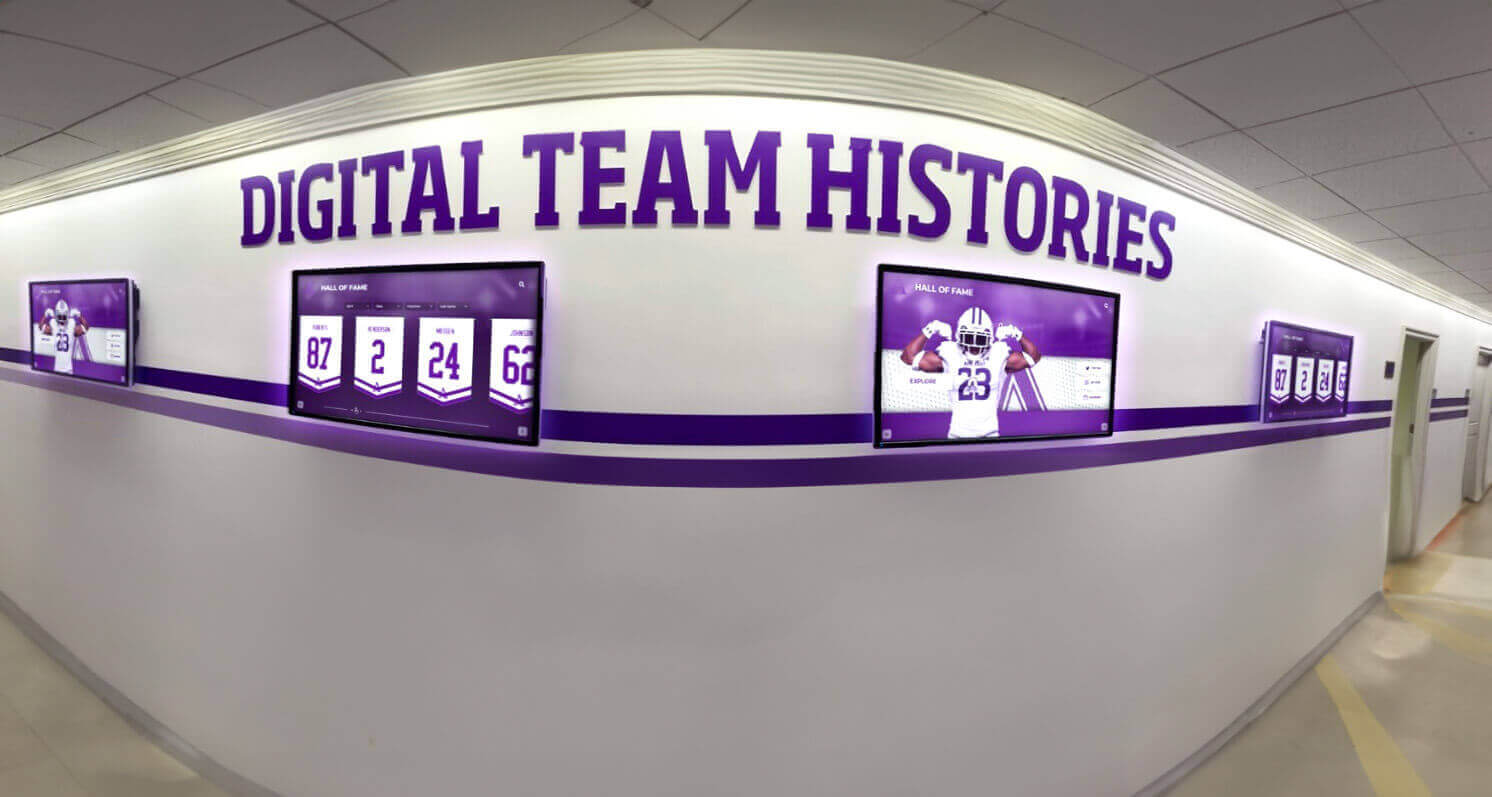
Preservation for Future Audiences
Oral history interviews are conducted and preserved with future audiences in mind, not just immediate purposes. Interviewers ask questions that will remain relevant decades later, provide context that may not be obvious to future listeners, and record with technical quality ensuring long-term usability. This forward-looking orientation distinguishes oral history from journalism or public relations interviews serving immediate communication needs but lacking preservation focus.
For recognition programs, this preservation orientation ensures that recorded interviews remain valuable as institutional archives grow over years and decades. An interview recorded today with a 1970 graduate provides increasingly rare perspectives as time passes, becoming more valuable as that era recedes into history and fewer firsthand witnesses remain available.
Ethical Framework and Informed Consent
Professional oral history follows ethical guidelines ensuring participants understand how their interviews will be used, maintain control over their stories, and provide informed consent for recording, preservation, and access. This ethical foundation builds trust enabling candid conversations while protecting participants’ rights and privacy.
For institutions conducting oral history programs, following established ethical practices ensures interviews can be used appropriately for recognition displays, online access, educational programming, and archival preservation without future concerns about permissions or usage rights.
The Unique Value Oral Histories Bring to Recognition Programs
Oral history content enhances recognition displays and programs in ways that traditional materials cannot replicate.
Authentic Voices Creating Emotional Connections
Hearing inductees describe achievements in their own voices creates emotional impact that photos and text cannot match. Voice inflections conveying pride, laughter at remembered moments, pauses reflecting on challenges overcome, or emotion discussing mentors and supporters bring humanity to achievement recognition. These authentic expressions create connections between current community members and recognized individuals, making achievements feel personally relevant rather than distant historical facts.
When current students explore recognition displays featuring oral history excerpts, they hear voices of real people who once sat in the same classrooms, participated in similar activities, and faced comparable challenges. This personal connection inspires more effectively than reading achievement summaries alone.
Contextual Depth Enriching Understanding
Oral histories provide contextual information that explains why achievements matter, what circumstances made them possible or challenging, how they fit within broader institutional or community history, and what subsequent impacts they created. This depth transforms recognition from simple celebration into educational resources teaching broader lessons about persistence, innovation, leadership, and excellence.
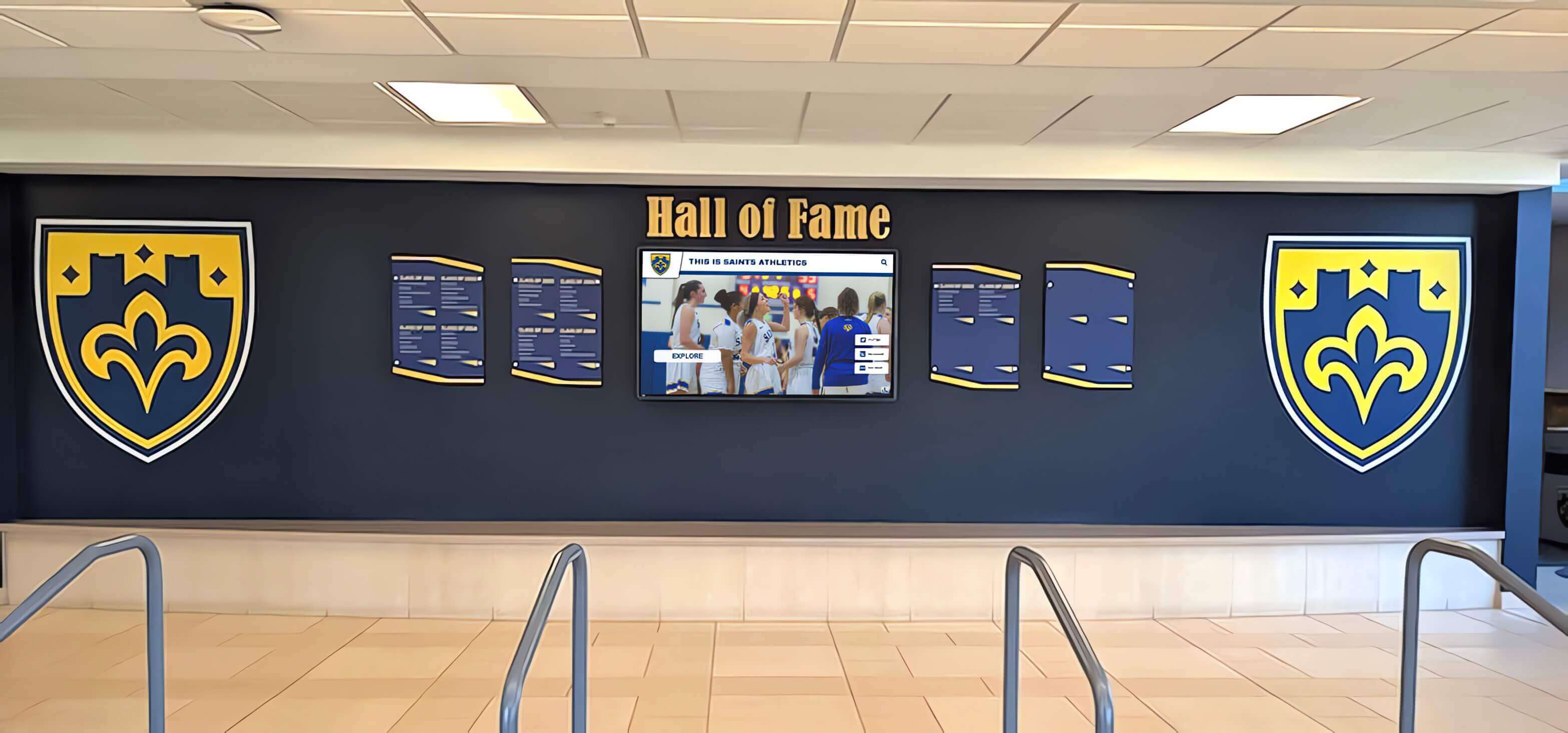
For example, an athlete inducted into a hall of fame might have their record times listed on traditional displays. But in oral history interviews, they might describe training with limited facilities, support from family members who sacrificed for their success, teammates who pushed them to improve, coaches whose strategies proved crucial, or how athletic success taught life lessons applied throughout subsequent careers. This contextual richness makes recognition more meaningful and educational.
Diverse Perspectives and Multiple Voices
Organizations contain multiple perspectives on shared experiences—different people remember events differently, emphasize various aspects as significant, and interpret meanings through personal lenses. Oral history programs capturing multiple voices about related topics or time periods create rich tapestries showing institutional history from diverse viewpoints rather than single authoritative narratives.
This multiplicity proves particularly valuable for alumni engagement initiatives where different generations, demographic groups, and program affiliations bring distinct perspectives that together create comprehensive pictures of institutional evolution and experience.
Preservation of Disappearing Knowledge
Oral history captures information that exists nowhere else—personal experiences never written down, informal traditions passed through participation rather than documentation, cultural knowledge embedded in community practice, and perspectives of individuals who might not otherwise contribute to historical records.
Many schools have lost irreplaceable history because they didn’t interview longtime educators before retirement, failed to document student experiences from particular eras, or never captured perspectives of support staff, coaches, or administrators whose contributions shaped institutions profoundly but left limited paper trails. Systematic oral history programs prevent such losses by proactively capturing stories while narrators remain available.
Planning Oral History Programs for Recognition and Preservation
Successful oral history initiatives require thoughtful planning addressing project scope, resource requirements, ethical considerations, and integration with broader recognition efforts.
Defining Project Scope and Objectives
Clear objectives guide oral history programs toward specific outcomes rather than unfocused documentation efforts.
Identifying Interview Priority Categories
Most institutions cannot interview everyone potentially worthwhile, requiring strategic prioritization including distinguished alumni inducted into halls of fame, long-serving educators nearing or entering retirement, student leaders from recent graduating classes, community members with deep institutional knowledge, individuals representing underrepresented groups in archives, and participants in significant institutional events or transitions.
Create systematic lists prioritizing candidates based on age and availability urgency, uniqueness of their perspectives and experiences, significance of their contributions or achievements, representativeness of broader groups or experiences, and likelihood of providing engaging, articulate interviews.
Thematic Focus Areas
Rather than conducting completely open-ended life history interviews, many recognition-focused oral history programs organize around specific themes including achievement journeys and career development pathways, formative experiences during school or organizational involvement, evolution of programs, traditions, or facilities over time, significant institutional events or transitions, and mentorship relationships and influential figures.
Thematic organization helps interviewers prepare focused questions while ensuring captured content directly supports recognition program objectives and addresses specific historical gaps.

Integration with Recognition Displays and Archives
Plan how oral history content will be used including integration into digital recognition displays and interactive touchscreen kiosks, online archives accessible to researchers and community, educational programming for current students, institutional anniversary or reunion events, and fundraising or advancement communications.
Understanding intended uses ensures appropriate interview content, technical recording quality, and proper consent for various applications.
Establishing Ethical Frameworks and Consent Processes
Professional oral history requires ethical practices protecting participants’ rights and building trust enabling candid conversations.
Informed Consent Documentation
Before conducting interviews, provide participants with written information explaining project purpose and how interviews will be used, interviewer and sponsoring organization identity, recording technical details and preservation plans, access policies determining who can view or hear interviews, participants’ rights to review and restrict content, and long-term preservation and potential future uses.
Obtain signed consent forms documenting participants’ agreement to record interviews, specific permissions for various uses (display, web access, education, publications), any restrictions participants place on content or access, and rights to review recordings before finalization.
Many oral history organizations provide template consent forms addressing common situations while remaining customizable for specific project needs. Legal counsel review ensures consent processes provide adequate protection for both institutions and participants.
Privacy and Sensitive Information Policies
Establish clear policies addressing situations where interviews include potentially sensitive information about other individuals not present, controversial institutional issues or decisions, personal experiences participants later regret sharing, or information becoming problematic as circumstances change.
Provide participants options to seal specific interview segments for defined periods, redact particular passages before public access, restrict access to researchers only versus general public, or withdraw consent entirely in exceptional circumstances.
These protective policies build trust enabling more candid conversations while ensuring participants maintain appropriate control over their contributions.
Resource Planning and Capacity Building
Oral history programs require various resources that institutions must plan for adequately.
Personnel and Interview Capacity
Determine who will conduct interviews including trained staff or faculty with oral history expertise, student interns supervised by experienced coordinators, professional oral historians contracted for major projects, or volunteers from alumni or community receiving training.
Each approach offers different advantages regarding cost, capacity, expertise level, and sustainability. Many institutions combine approaches—contracting professionals for high-priority subjects while training students or volunteers to expand capacity for broader documentation.
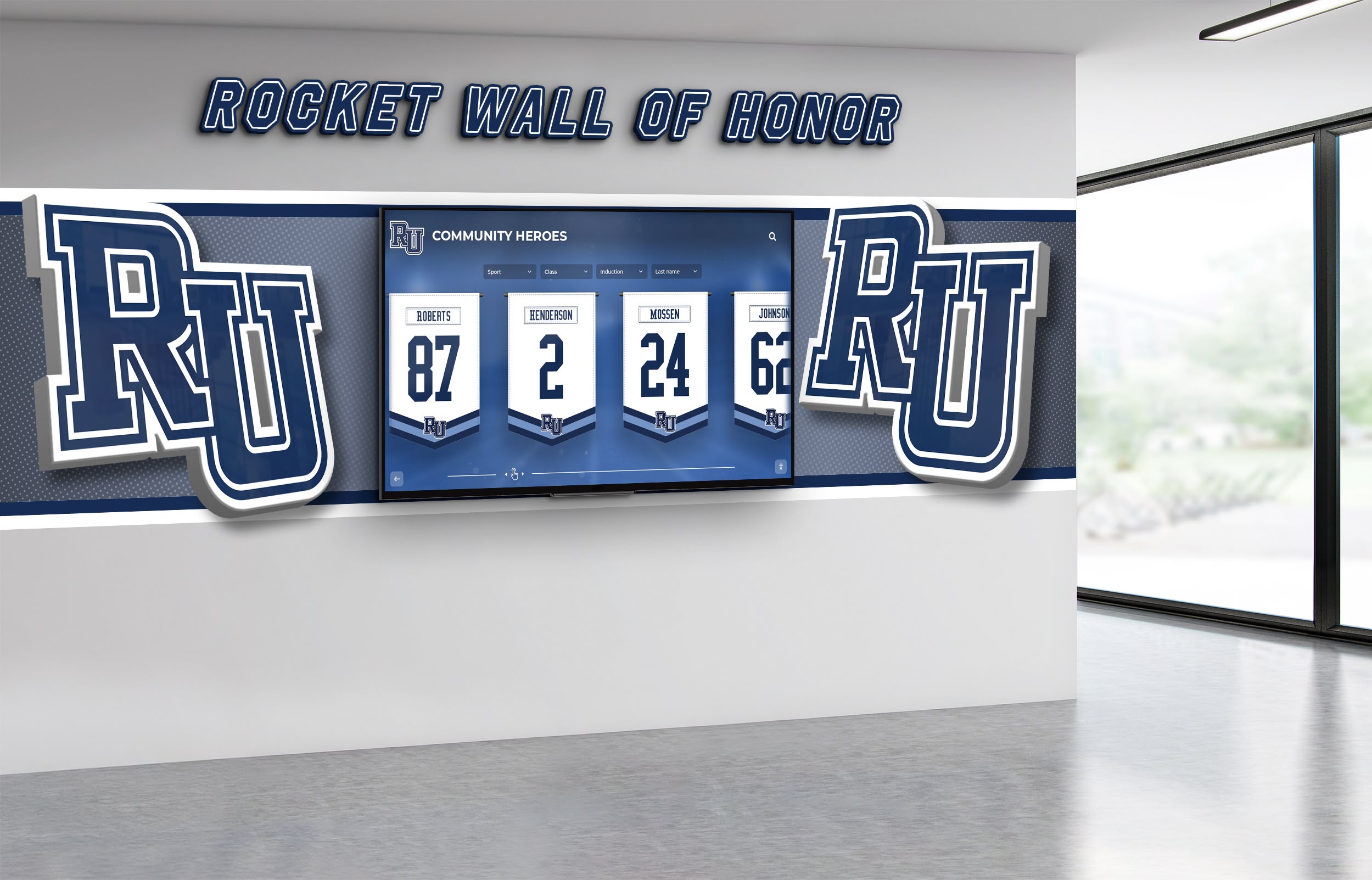
Technical Equipment and Recording Environment
Quality oral history recording requires appropriate equipment and settings including professional audio recorders ensuring clear sound capture, video cameras if visual recording desired, microphones optimizing voice clarity, lighting equipment for video quality, and quiet recording spaces minimizing background noise.
Many effective oral history programs operate with modest equipment investments focusing on quality audio recording over expensive video production. Clear audio proves essential—poor quality makes interviews unusable regardless of content value.
Time Requirements and Scheduling
Estimate realistic time requirements including interview preparation and research (2-4 hours per interview), interview sessions themselves (1-3 hours typically), post-interview processing and metadata creation (1-2 hours), transcript production if desired (3-10 hours depending on method), and content review with participants (1-2 hours).
These substantial time investments mean that even well-resourced programs typically conduct 20-50 interviews annually rather than hundreds, requiring strategic prioritization about whose stories to capture.
Conducting Effective Oral History Interviews
Interview quality directly impacts content value for recognition and preservation purposes, making interviewing skills development essential for program success.
Pre-Interview Preparation and Research
Effective interviews begin long before recording starts with thorough preparation ensuring focused, productive conversations.
Background Research on Interview Subjects
Before interviews, research participants thoroughly by reviewing institutional records and achievements, reading publications or public materials, consulting with colleagues familiar with subjects, identifying gaps in existing documentation, and developing preliminary understanding of career trajectories or contribution areas.
This research enables asking informed questions, following up on specific details, identifying unique aspects of individual stories, and avoiding wasting interview time on basic factual information available elsewhere.
For hall of fame inductees, review nomination materials, achievement summaries, and any existing biographical content ensuring oral history interviews add depth rather than simply repeat known information.
Developing Interview Guides and Questions
Create semi-structured interview guides covering desired topics while remaining flexible enough to follow interesting directions conversations take. Good guides include opening questions putting participants at ease, chronological frameworks helping narrators organize thoughts, thematic sections addressing specific topics, probing follow-up questions drawing out detail and reflection, and closing questions inviting additional thoughts or stories.
Avoid yes/no questions that generate minimal content. Instead, use open-ended questions like “Tell me about…” or “Describe your experience with…” that invite narrative responses. Prepare far more questions than time allows, selecting appropriate ones based on how conversations develop.
Pre-Interview Communication and Scheduling
Contact participants well in advance to schedule convenient interview times, explain project goals and what to expect, provide sample questions helping them prepare thoughts, arrange appropriate recording locations, and confirm consent form completion and any restrictions.
Allow participants adequate preparation time—typically 1-2 weeks—ensuring they can reflect on experiences and identify stories, photos, or documents they might want to reference during interviews.
Interview Techniques and Best Practices
Skilled interviewing draws out compelling narratives while maintaining focus on project objectives.
Creating Comfortable Interview Environments
Set up recording environments that feel comfortable and conversational including quiet spaces without interruptions or background noise, seating arrangements feeling natural rather than formal, refreshments making sessions hospitable, and appropriate temperature and lighting.
For video recording, position cameras unobtrusively so participants can ignore them after initial setup. Test all equipment beforehand avoiding technical difficulties disrupting conversation flow.
Active Listening and Follow-Up Questions
Strong interviewers listen carefully to responses, allowing silence that gives participants time to think, following interesting directions even when departing from planned questions, asking specific follow-up questions drawing out details or examples, and showing genuine interest in stories being shared.
Avoid interrupting or finishing participants’ sentences. Let them tell stories at their own pace even when that means tolerating pauses or seemingly tangential detours that often lead to valuable content.

Drawing Out Concrete Details and Examples
Abstract generalizations provide less valuable content than specific examples and concrete details. When participants make broad statements—“I had great teachers” or “The program prepared me well”—follow up with questions like “Can you give me a specific example?” or “Tell me about a particular teacher who influenced you” that elicit detailed stories bringing abstractions to life.
These specific narratives create most compelling content for recognition displays where hearing inductees describe particular moments, challenges, or relationships makes achievements feel personal and accessible rather than distant or mythologized.
Managing Sensitive Topics and Emotions
Some interview topics may prompt strong emotions or touch on difficult experiences. Skilled interviewers balance capturing authentic emotion with providing appropriate support by allowing emotional moments rather than rushing past them, having tissues available if participants become tearful, offering breaks when needed, and respecting signals when participants prefer not to discuss particular topics.
These emotional moments often create most powerful recognition content when participants share vulnerability alongside achievement—discussing family sacrifices, near failures before ultimate success, or mentors whose support proved crucial.
Post-Interview Processing and Preservation
Interviews become usable content only through appropriate post-recording processing.
Creating Comprehensive Metadata
Document essential information about each interview including participant identification and biographical summary, interview date, location, and interviewer, recording equipment and technical specifications, topics covered and key themes, restrictions on access or use, and related materials or documents referenced.
This metadata proves essential for managing growing oral history collections and enabling researchers or content creators to locate relevant interviews within large archives.
Transcript Production Considerations
Transcripts make oral history content searchable and accessible but require significant time investment. Options include professional transcription services costing $100-$250 per hour of recording, student or volunteer transcription requiring substantial time, automated transcription technology requiring editing for accuracy, or descriptive summaries instead of full transcripts for some interviews.
Many programs create full transcripts for highest-priority interviews while producing summaries or using automated speech recognition for broader collection coverage, balancing thoroughness with practical capacity constraints.
Participant Review and Approval
Offer participants opportunities to review recordings and transcripts before finalization, correct factual errors or unclear statements, clarify passages that might be misunderstood, and confirm they remain comfortable with planned usage.
This review process sometimes leads participants to request sealing specific passages or restricting particular content—requests that ethical programs honor even when reducing available material. The trust this builds often results in more candid future interviews as participants see their autonomy respected.
Integrating Oral Histories into Digital Recognition Displays
Oral history content achieves maximum impact when seamlessly integrated into recognition programs where audiences naturally encounter it.
Video and Audio in Interactive Recognition Displays
Modern digital recognition platforms enable rich multimedia integration showcasing oral history content effectively.
Creating Compelling Video Excerpts
Rather than expecting visitors to watch hour-long complete interviews, create edited excerpt videos highlighting most compelling passages including achievement journey narratives (3-5 minutes), formative experience stories (2-3 minutes), mentor or influence reflections (2-4 minutes), advice to current students (1-2 minutes), and memorable moments or anecdotes (1-3 minutes).
Professional editing enhances content by adding title screens identifying speakers and contexts, incorporating relevant photos or documents, including captions for accessibility, and smoothly connecting different interview segments that relate thematically.
Solutions like Rocket Alumni Solutions provide platforms specifically designed for integrating video content within recognition displays, making oral history clips easily accessible as visitors explore inductee profiles or browse achievement galleries.
Audio-Only Presentations
For some purposes, audio-only presentation works effectively and requires less technical capacity than video including podcast-style episodes featuring interview highlights, audio accompanying photo galleries and timelines, background audio playing in recognition display areas, or downloadable content for mobile listening.
Audio-only formats particularly suit interviews where visual recording wasn’t feasible or when photo quality limits video usability but audio content remains valuable.
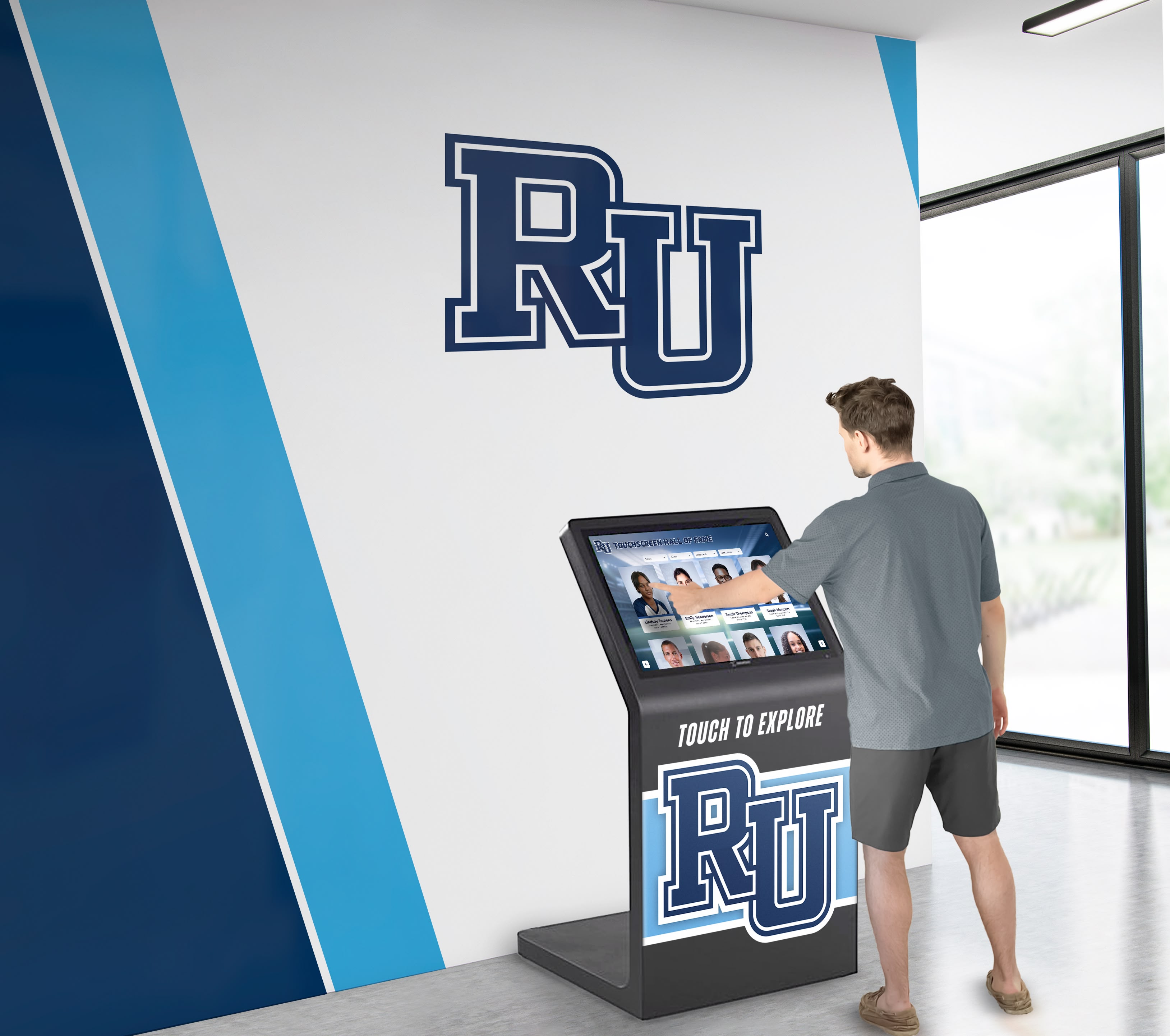
Interactive Discovery and Exploration
Digital platforms enable visitors to discover oral history content through multiple pathways including browsing inductee profiles containing embedded interview clips, searching for specific topics or keywords, exploring thematic collections organized around common experiences, and following related content connections between different speakers.
These discovery capabilities ensure visitors encounter oral history content naturally while exploring recognition displays rather than requiring them to navigate separate archives that most casual users never discover.
Thematic Collections and Storytelling Sequences
Organize oral history content into curated experiences beyond individual interviews.
Multi-Voice Perspectives on Shared Topics
Create collections presenting multiple individuals’ perspectives on shared topics including evolution of specific programs or traditions, significant institutional events or transitions, era-specific experiences showing how student life changed, career preparation and paths from education to profession, and impact of particular educators, coaches, or administrators.
These multi-voice collections show diversity of experience and perspective while building comprehensive pictures of institutional history and community more effectively than single narratives.
Chronological Institutional Histories
Organize oral histories chronologically creating living timelines of institutional development through voices of those who experienced different eras. Digital displays can present interactive school history timelines integrating oral history clips with photos, documents, and achievement records showing how communities evolved across decades.
These chronological presentations prove particularly valuable during anniversaries, reunions, or events where broad institutional storytelling serves important purposes.
Achievement Category Storytelling
Within specific recognition categories—athletic excellence, academic achievement, community service, creative accomplishment—compile oral histories showing common themes and diverse experiences including challenges and obstacles different achievers overcame, mentors and supporters who enabled success, formative experiences that shaped trajectories, and advice and insights for current community members.
This thematic organization helps current students or members find relevant inspiration and guidance based on their particular interests and aspirations.
Accessibility and User Experience Considerations
Ensure oral history content remains accessible to all audiences regardless of abilities or circumstances.
Captioning and Transcripts
Provide text alternatives for all audio and video content including synchronized captions on videos, full text transcripts accompanying audio, and searchable transcript databases allowing keyword discovery.
These accommodations serve deaf and hard-of-hearing audiences while also benefiting visitors who prefer reading to listening, researchers searching for specific content, and non-native language speakers who find reading easier than processing spoken language.
Multiple Engagement Levels
Design oral history presentation allowing different engagement depths including short highlight clips for casual browsers (1-2 minutes), medium-length thematic excerpts for interested viewers (3-5 minutes), and access to complete interviews for researchers or deeply engaged audiences.
This tiered approach respects that not all visitors want identical depth, ensuring casual observers encounter compelling content without overwhelming those seeking brief inspiration during quick display interactions.
Long-Term Preservation and Archive Management
Oral history programs create valuable resources requiring careful stewardship ensuring continued accessibility across decades.
Digital Preservation Best Practices
Follow established preservation standards ensuring recorded content remains usable as technologies evolve.
File Formats and Technical Standards
Store master recordings in preservation-quality formats including uncompressed or losslessly compressed audio and video, industry-standard formats with broad software support, comprehensive embedded metadata, and documentation of recording equipment and technical specifications.
Create derivative formats optimized for different uses while always preserving original high-quality masters. This approach ensures flexibility to create new formats as technologies and needs evolve without depending on outdated source materials.
Redundant Storage and Backup Systems
Protect oral history content through multiple storage locations including cloud-based storage with reputable providers, on-site institutional servers or storage systems, offline backup drives stored separately from primary systems, and periodic validation ensuring file integrity over time.
Many institutions implementing digital asset management systems for broader content also incorporate oral history collections, benefiting from enterprise-grade storage, backup, and preservation infrastructure.
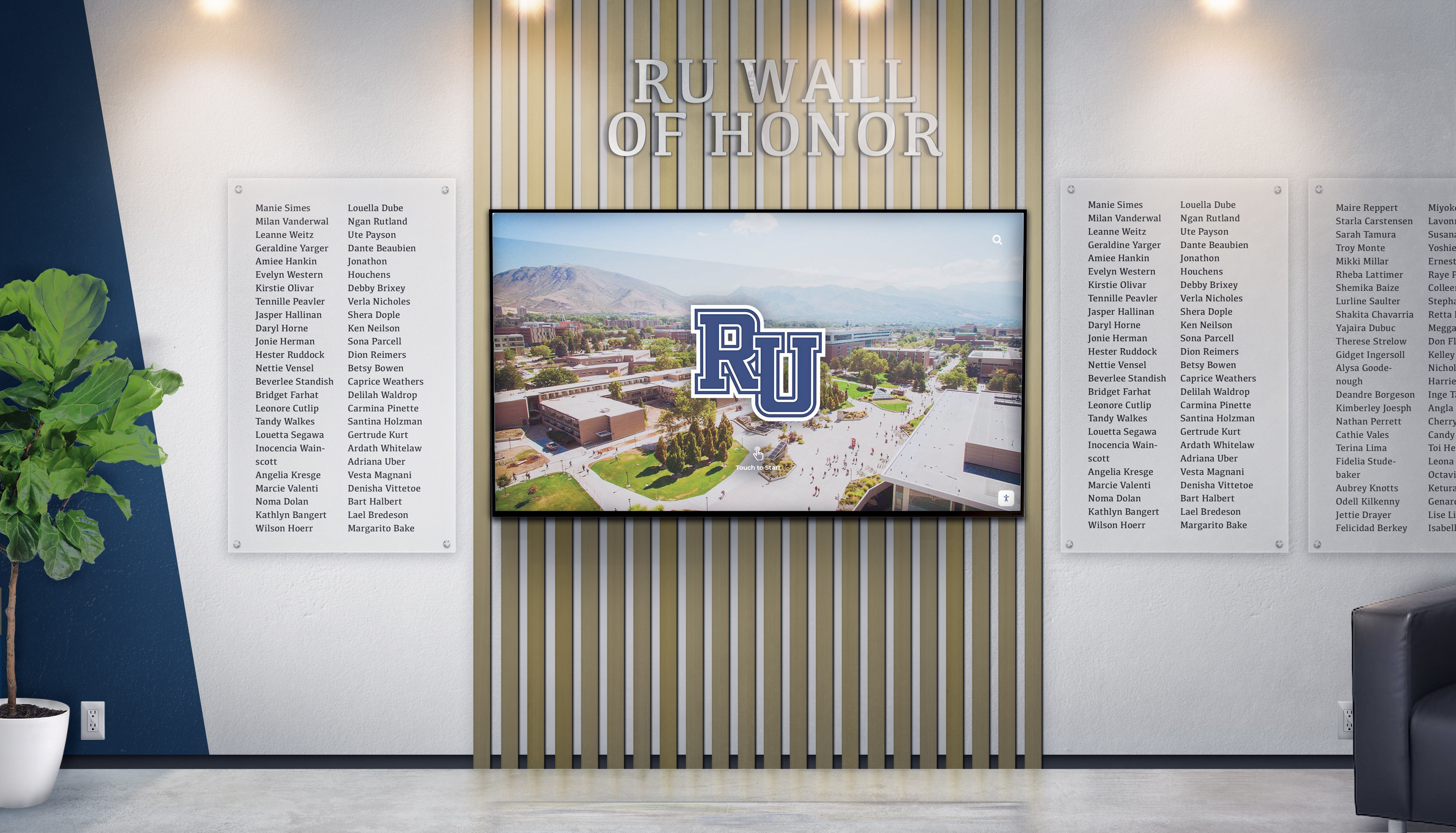
Migration Planning and Format Updates
Technology evolution means current recording formats may eventually become difficult to access. Establish migration schedules periodically transferring content to current formats, monitoring format obsolescence and emerging standards, testing archived content ensuring continued playability, and maintaining documentation of format changes over time.
Cloud-based recognition platforms typically handle format migration automatically, relieving institutions of technical burdens while ensuring content remains accessible regardless of technology changes.
Archive Organization and Discovery
Well-organized archives enable effective content discovery and reuse.
Cataloging Systems and Metadata Standards
Implement comprehensive cataloging documenting participant identification and demographics, interview dates and locations, topics covered and themes addressed, related materials and contextual documents, restrictions on access or usage, and technical specifications and format information.
Use consistent controlled vocabularies and classification systems enabling effective searching across growing collections. Many institutions follow oral history professional organization standards ensuring their cataloging remains compatible with broader research community practices.
Search and Browse Capabilities
Provide multiple discovery pathways allowing different users to find relevant content including name-based searching for specific individuals, keyword searching within transcripts and metadata, browsing by themes or topics, filtering by time periods or categories, and exploring related content connections.
Advanced systems incorporate timestamp-level searching allowing users to locate specific passages within longer interviews—particularly valuable for researchers conducting detailed investigations.
Privacy, Ethics, and Ongoing Consent Management
Long-term oral history stewardship requires continuing attention to ethical obligations.
Managing Access Restrictions and Embargoes
Track and enforce restrictions participants place on interviews including time-limited embargoes before content becomes accessible, audience limitations restricting access to researchers versus general public, passage-specific restrictions on particular content within interviews, and use restrictions limiting specific applications.
Implement systems ensuring restrictions automatically lift when appropriate time periods expire while providing secure access controls preventing unauthorized viewing of restricted content.
Responding to Changed Circumstances
Occasionally situations require revisiting oral history usage including participants requesting content removal or restriction, information proving factually incorrect requiring correction, subjects discussed becoming newly sensitive, or legal concerns emerging about specific content.
Establish clear policies and procedures addressing such situations, balancing preservation obligations with ethical responsibilities to participants and others affected by recorded content.
Oral History Program Models and Implementation Approaches
Institutions implement oral history programs using various models matching their specific contexts, resources, and objectives.
Student-Led Oral History Projects
Many schools and universities involve students in oral history collection, creating valuable learning experiences while building institutional archives.
Academic Course Integration
Oral history projects fit naturally into various academic contexts including history or social studies courses exploring research methods, journalism or communication classes developing interview skills, digital media courses producing multimedia content, community engagement courses connecting students to local heritage, and service-learning initiatives benefiting institutional archives.
Student-conducted interviews serve dual purposes—creating learning experiences developing research and communication skills while capturing content that institutions might not otherwise document given limited professional staff capacity.
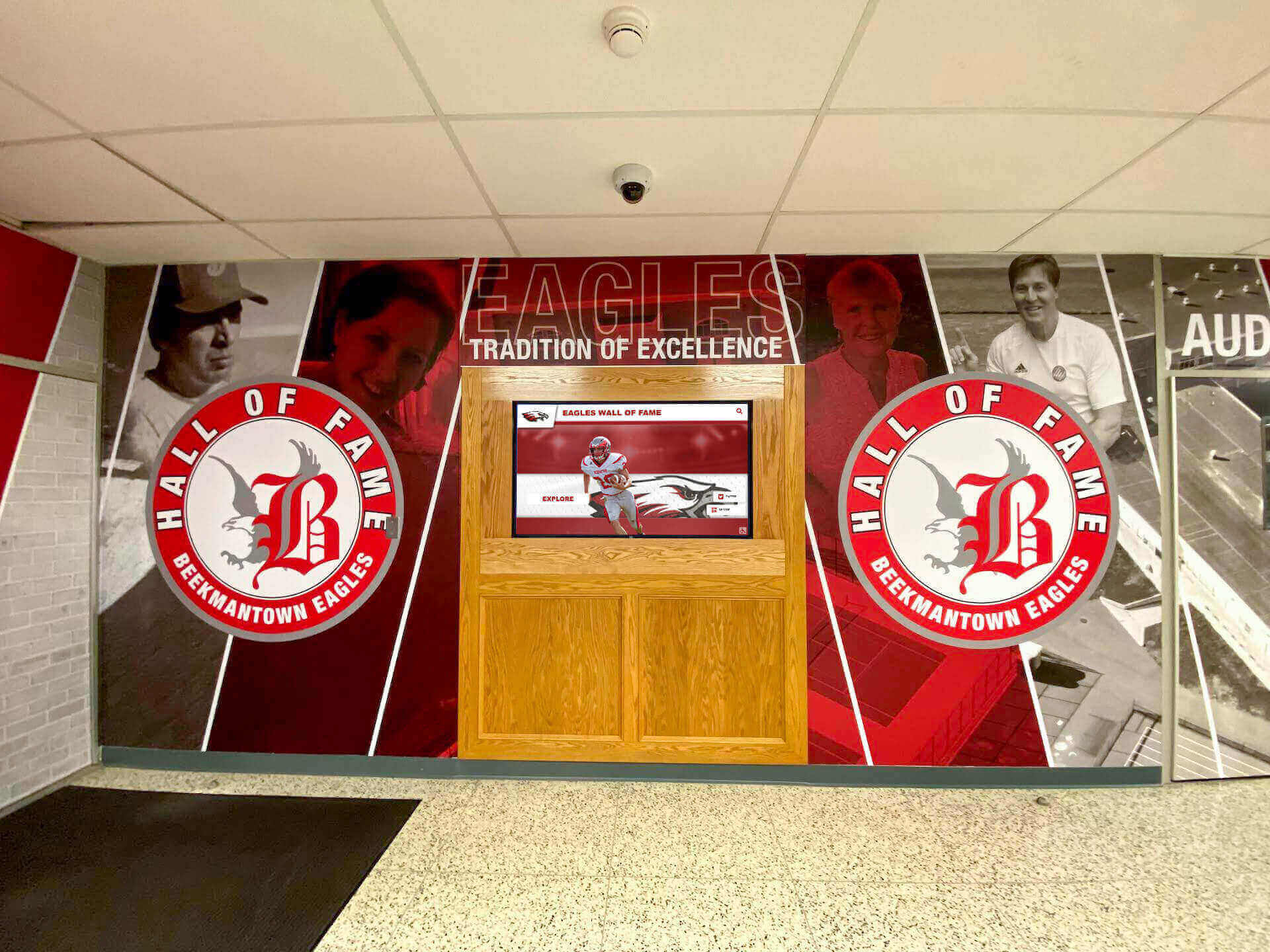
Training and Quality Assurance
Student involvement requires appropriate training and supervision including oral history methodology and ethics instruction, technical training on recording equipment, supervised practice interviews with feedback, faculty review of interview plans and questions, and quality control processes ensuring professional standards.
While student-conducted interviews may not always match professional quality, appropriate training and supervision enable valuable content collection that significantly expands what institutions can accomplish with professional staff alone.
Benefits for Student Learning and Development
Oral history projects provide rich learning experiences developing interviewing and communication skills, historical research and critical thinking, technical media production capabilities, empathy and intergenerational understanding, and connections to institutional heritage and community.
Many students report oral history projects among most meaningful learning experiences, particularly when interviewing distinguished alumni, community elders, or veterans who share compelling life stories that transcend typical classroom content.
Professional and Institutional Programs
Some institutions establish permanent oral history programs with dedicated staff, infrastructure, and systematic approaches.
Dedicated Oral History Positions
Larger institutions may create positions specifically responsible for oral history initiatives including oral historians with specialized training and expertise, archivists incorporating oral history into broader preservation work, advancement staff capturing donor and alumni stories, or communications professionals producing multimedia content.
Dedicated positions enable more ambitious programs conducting dozens of interviews annually, developing sophisticated archives with professional cataloging, and creating polished content products for recognition displays, publications, and advancement purposes.
Ongoing Systematic Documentation
Permanent programs enable systematic rather than sporadic documentation including regular interview cycles targeting priority candidates, comprehensive coverage ensuring diverse representation, proactive outreach before key individuals become unavailable, and integration with other institutional initiatives like reunions or anniversaries.
This systematic approach prevents the common problem where institutions only think about oral history during special projects or anniversaries, missing opportunities to capture stories from individuals who pass away or become unavailable during gaps between initiatives.
Collaborative and Partnership Models
Some institutions develop oral history capacity through partnerships and collaborations.
Professional Consultant Engagement
Organizations lacking internal expertise often contract professional oral historians for significant projects including major anniversary or milestone documentation, high-profile inductee or donor interviews, training for staff or volunteers building capacity, and project design and methodology development.
Professional engagement proves particularly valuable when launching programs, tackling complex projects, or ensuring appropriate quality for content serving prominent recognition or advancement purposes.
Community and Alumni Volunteer Programs
Some institutions recruit trained volunteers from alumni or community to conduct interviews including retired educators with relevant skills and institutional knowledge, professional journalists or media producers, history enthusiasts interested in preservation work, and family members of interview subjects building personal archives.
Volunteer programs extend capacity beyond staff limitations while engaging community members in meaningful contributions to institutional heritage preservation.
Best Practices from Successful Oral History Recognition Programs
Institutions with effective oral history programs share common approaches contributing to their success.
Starting Small and Scaling Gradually
Ambitious comprehensive programs often overwhelm limited resources, while modest initial efforts build capacity and demonstrate value enabling expansion.
Pilot Projects and Initial Focus
Begin with manageable pilot projects including interviewing current year hall of fame inductees, documenting retiring educators or administrators, capturing student perspectives from graduating classes, or recording participants in significant institutional events.
These focused initial efforts allow refining processes, developing technical capacity, training personnel, and creating example content demonstrating value to stakeholders who might support program expansion.
Demonstrating Value Before Scaling
Use initial oral history content to show concrete benefits including enhanced recognition display engagement, positive feedback from families and community, valuable content for advancement communications, or educational applications in programming.
Demonstrated value makes building support for expanded programs easier than abstract proposals about potential benefits of initiatives not yet proven in specific institutional contexts.
Prioritizing Sustainability Over Comprehensiveness
Programs must remain manageable within available resources over extended periods rather than ambitious but unsustainable efforts that burn out quickly.
Realistic Annual Interview Targets
Set achievable annual interview goals matching actual capacity—perhaps 10-20 interviews yearly for small programs, 20-50 for well-resourced initiatives, rather than unrealistic targets that create frustration when not met.
Recognize that capturing even modest numbers of interviews annually creates substantial archives over years—20 interviews yearly produces 200 over a decade, representing rich collections by any standard.
Integrating with Existing Workflows
Connect oral history to established institutional processes rather than creating completely separate initiatives including coordinating with hall of fame induction ceremonies, linking to reunion and homecoming events, connecting with advancement donor stewardship, and integrating with student academic projects.
This integration ensures oral history becomes part of regular institutional rhythm rather than additional work competing with existing priorities.
Balancing Preservation and Accessibility
Oral histories serve both long-term archival preservation and immediate access purposes requiring appropriate balance.
Immediate Access for Recognition Displays
Prioritize making content available for recognition displays relatively quickly including editing highlight clips within weeks of interviews, integrating content into digital displays while complete processing continues, and making some material available even when full archival processing remains pending.
This rapid deployment demonstrates immediate value while comprehensive archive development proceeds at sustainable pace.
Comprehensive Archival Processing Over Time
Recognize that full archival processing—complete transcripts, comprehensive metadata, detailed cataloging—may occur months or even years after initial interviews and basic availability.
Accept this gradual processing rather than delaying any content access until complete archival work finishes for all materials. Valuable content serving recognition purposes immediately provides benefits even when full scholarly-level processing remains incomplete.
Getting Started: Launching Oral History Initiatives
Institutions interested in developing oral history programs can take concrete steps toward implementation.
Assessing Readiness and Capacity
Evaluate organizational capacity for oral history work including personnel who could conduct, coordinate, or supervise interviews, technical equipment or budgets for recording and processing, physical spaces suitable for interview recording, institutional support for systematic programs, and existing archives or recognition programs that oral history would enhance.
Honest capacity assessment guides realistic program design matching actual resources rather than creating plans requiring unavailable capacity.
Building Foundational Infrastructure
Establish essential elements before conducting interviews including consent forms and ethical protocols, basic recording equipment meeting quality standards, interview guide templates and question frameworks, storage and backup systems for recorded content, and relationships with recognition display platforms or archives.
These foundational elements ensure systematic professional approaches rather than ad hoc efforts that may create future problems with permissions, technical quality, or content organization.
Strategic Priority Setting
Identify highest-priority candidates for initial interviews based on age and availability urgency, unique or underrepresented perspectives, hall of fame inductees or major award recipients, individuals with broad institutional knowledge, and probable interview quality and engagement.
Strategic prioritization ensures limited resources focus on most valuable opportunities rather than scattered efforts capturing whatever proves convenient without considering comparative value.
Platform Selection for Content Integration
Choose digital recognition platforms that effectively integrate oral history content including robust video and audio hosting and playback, searchable transcript integration, thematic collection creation capabilities, mobile and web accessibility, and long-term preservation and format support.
Selecting appropriate platforms from the start prevents future migration challenges when content accumulated on inadequate systems requires complex transfers to better solutions.
Conclusion: Preserving Voices That Bring Achievements to Life
Achievements gain depth, humanity, and inspiration when told in the authentic voices of those who lived them. Oral history interviews transform recognition from sterile fact recitation into compelling human stories showing the challenges, support, fortunate breaks, hard work, and sometimes plain luck that combine in achievement journeys. These personal narratives create connections between past and present, inspire current community members pursuing their own excellence, preserve institutional memory that would otherwise disappear, and honor individuals not just for what they accomplished but for their willingness to share their experiences with future generations.
For schools, universities, and organizations implementing digital recognition displays and halls of fame, oral history content dramatically enhances visitor engagement and program impact. Rather than static plaques listing achievements, modern recognition systems featuring video interviews create dynamic experiences where inductees explain their journeys, reflect on formative experiences, express gratitude to supporters, and offer insights to current students or members. This multimedia richness makes recognition displays destinations that visitors actively seek out and spend substantial time exploring rather than briefly scanning before moving on.
The most successful recognition programs integrate oral history systematically rather than treating it as occasional supplement. By conducting interviews with every hall of fame inductee, systematically documenting significant institutional figures, capturing diverse perspectives across different eras and experiences, and creating accessible archives that serve both immediate recognition and long-term preservation purposes, institutions build comprehensive heritage resources that grow continuously more valuable over time.
Beginning oral history programs requires modest resources—basic recording equipment, trained interviewers, appropriate consent protocols, and digital platforms integrating content effectively. But the returns on these investments prove substantial—enhanced recognition impact, preserved institutional memory, inspired current community members, and living archives documenting authentic voices and experiences that no other historical method can capture.
Ready to enhance your recognition programs with oral history content? Solutions like Rocket Alumni Solutions provide comprehensive platforms integrating oral history videos seamlessly within interactive displays, unlimited cloud storage, mobile and web accessibility, and all capabilities needed to preserve and share the authentic voices behind your institution’s achievements with current and future generations.
The distinguished members of your community have stories worth telling. Oral history programs ensure those stories are captured, preserved, and shared—honoring individuals while inspiring everyone who hears them.




































